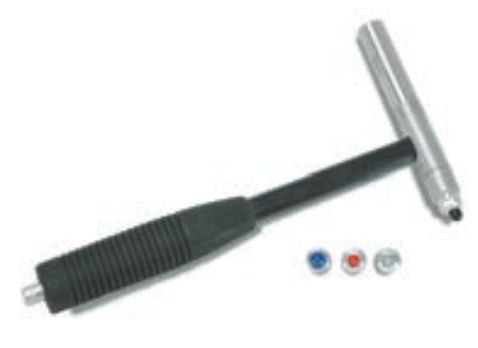Impact / Modal Hammers for Reliable Impact Measurements
Each PCB® Modally Tuned®, ICP® instrumented impact hammer is equipped with a highly durable, rugged force sensor that is seamlessly integrated directly into the hammer’s striking surface, ensuring precise and reliable impact measurements.
“Modal Tuning” is a specialized feature designed to ensure that the inherent structural characteristics of the hammer do not interfere with or distort the measurement results. This is achieved by effectively eliminating hammer resonances within the frequency range of interest, preventing these resonances from corrupting the test data. The result is a set of measurements that are more accurate, reliable, and consistent across different testing conditions.
The force sensor accurately measures both the amplitude and the frequency content of the energy stimulus applied to a test object. Accelerometers are employed alongside the hammer to capture detailed measurements of the object’s structural response resulting from the hammer blow. Additionally, a variety of interchangeable tips provided with each hammer allow the energy content of the force impulse to be precisely adjusted, ensuring it meets the specific requirements of the item being tested.
Using advanced multi-channel data acquisition and sophisticated analysis software, the test engineer is able to accurately ascertain a wide variety of mechanical properties. This process leads to a comprehensive understanding of an object’s structural behavioral characteristics under different conditions. The range of items analyzed can include resonance detection, mode shapes, transfer characteristics, as well as crucial aspects of structural health, such as the early identification of cracks and fatigue damage.
Highlights:
Modally Tuned® to provide more consistent results
Variety of hammers to suit any size test object
Assortment of tips offer frequency tailored impulse
Applications:
Structure Health Testing
Resonance Determination
Modal Analysis
ICP® MODAL HAMMERS
 |
 |
|||
| Model Number | 086E80 | (TLD)086C01 | (TLD)086C02 | (TLD)086C03 |
|---|---|---|---|---|
| Sensitivity | 100 mV/lbf | 50 mV/lbf | 10 mV/lbf | |
| Measurement Range | 50 lbf pk | ±100 lbf pk | ±500 lbf pk | |
| Resonant Frequency | ≥100 kHz | ≥15 kHz | ≥22 kHz | |
| Non-Linearity | ≤1 % | |||
| Discharge Time Constant | ≥100 sec | ≥500 sec | ≥2,000 sec | |
| Typical Applications | Resonance detection, mode analysis, transfer characteristics, crack and fatigue detection | |||
Need Help? Let’s Talk!
Have questions or need support? Our team is here to assist you. Reach out now!

